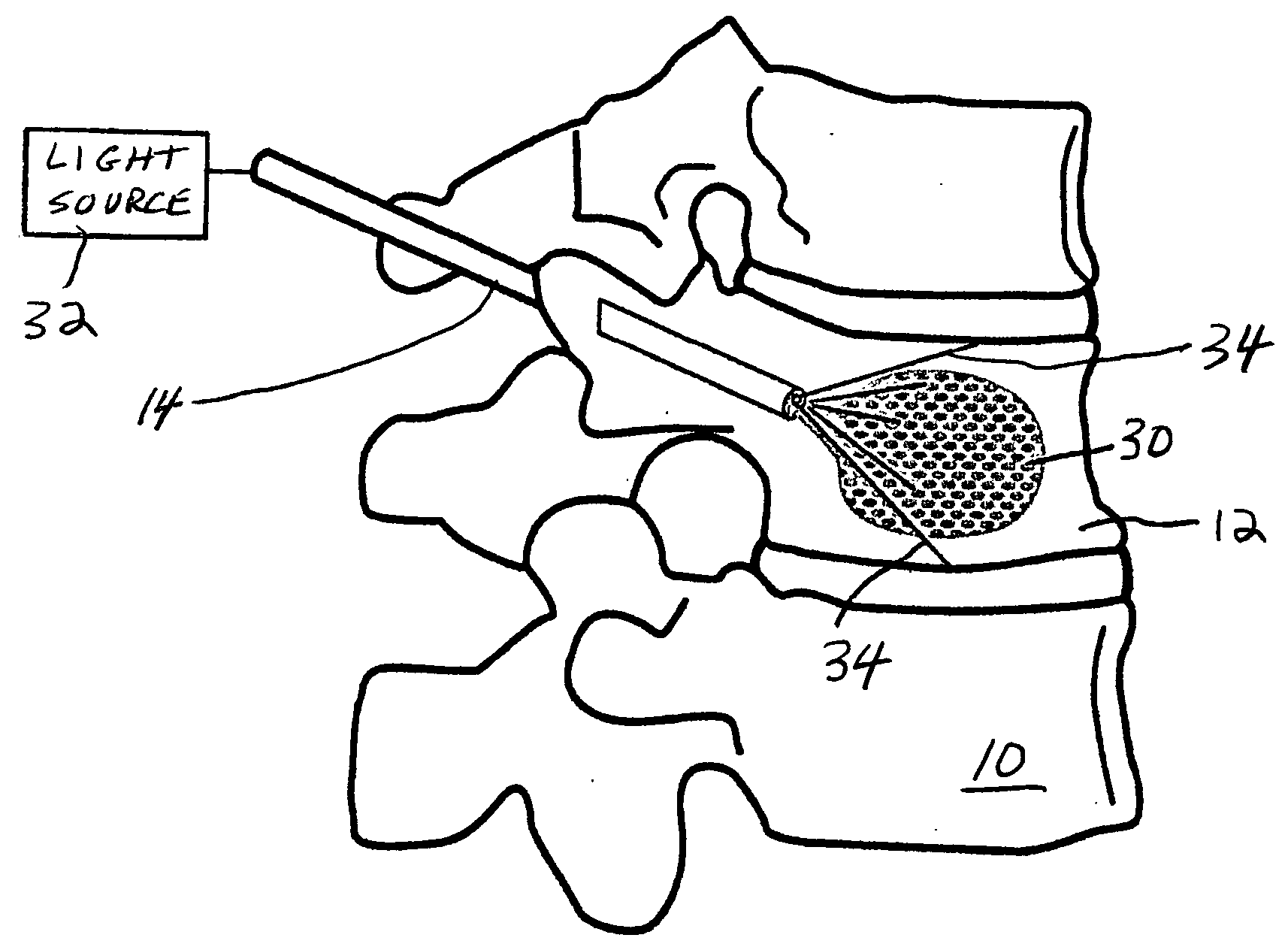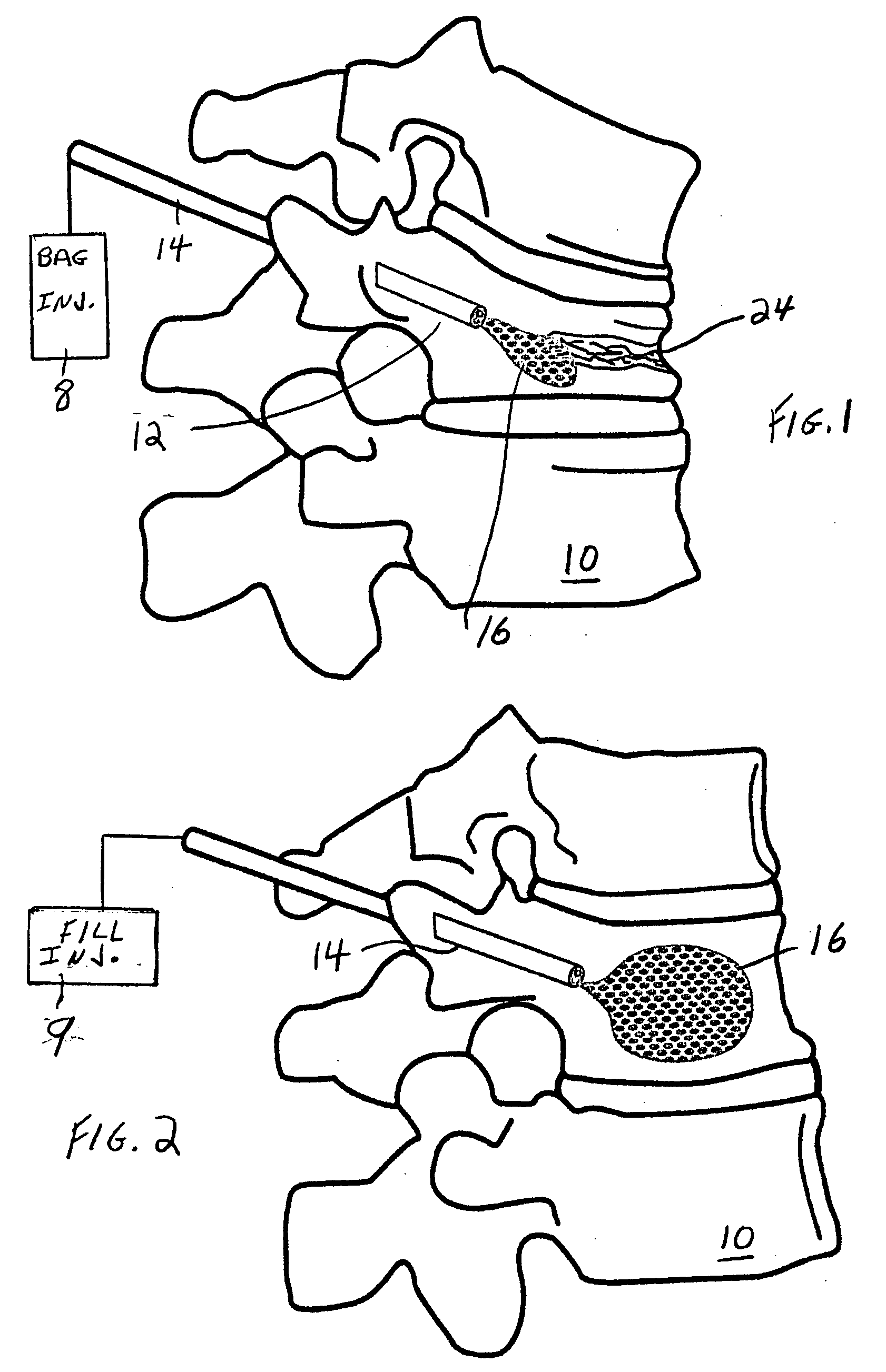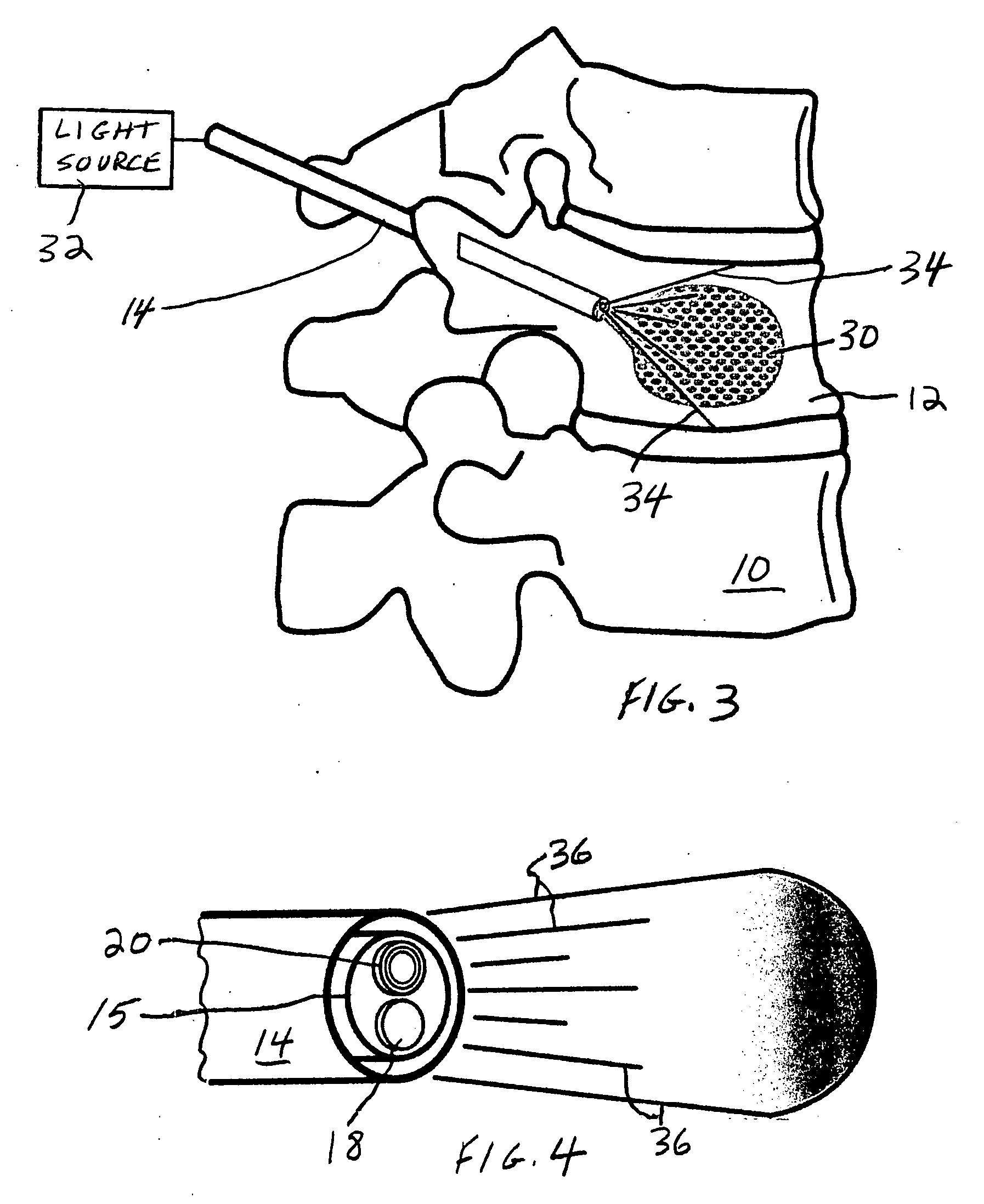Spinal fill for disk surgery
a spine and disk technology, applied in the field of electrosurgical instruments, can solve the problems poor heat conduction of vertebral anatomy, and rise in temperature, and achieve the effect of less heat, less likelihood of soft tissue or bone necrosis, and convenient use and handling
- Summary
- Abstract
- Description
- Claims
- Application Information
AI Technical Summary
Benefits of technology
Problems solved by technology
Method used
Image
Examples
Embodiment Construction
[0013] The adhesive or spinal flowable polymerizable fill material according to a feature of the invention is PIBMA, polyisobutylmethacrylate. It is generally made up of two constituents that are mixed together by the surgeon outside of the surgical site to form a flowable paste or cream-like consistency that can be injected into the spinal tissue. The resultant cream is then injected into the spinal tissue at the surgical site. The material self-cures in situ in about 6-8 min. The first constituent is liquid monomer isobutylmethacrylate available commercially in liquid form. To it is added finely powered polyisobutylmethacrylate, a solid polymer. Typically, the liquid monomer is added to a suitable container, and sufficient powdered polymer added while mixing with, say, a spatula, until a creamy consistency is formed; the creamy mixture is then poured into the instrument for delivering the mixture, and then injected by the instrument into the spinal area at the surgical site. It be...
PUM
 Login to View More
Login to View More Abstract
Description
Claims
Application Information
 Login to View More
Login to View More - R&D
- Intellectual Property
- Life Sciences
- Materials
- Tech Scout
- Unparalleled Data Quality
- Higher Quality Content
- 60% Fewer Hallucinations
Browse by: Latest US Patents, China's latest patents, Technical Efficacy Thesaurus, Application Domain, Technology Topic, Popular Technical Reports.
© 2025 PatSnap. All rights reserved.Legal|Privacy policy|Modern Slavery Act Transparency Statement|Sitemap|About US| Contact US: help@patsnap.com



